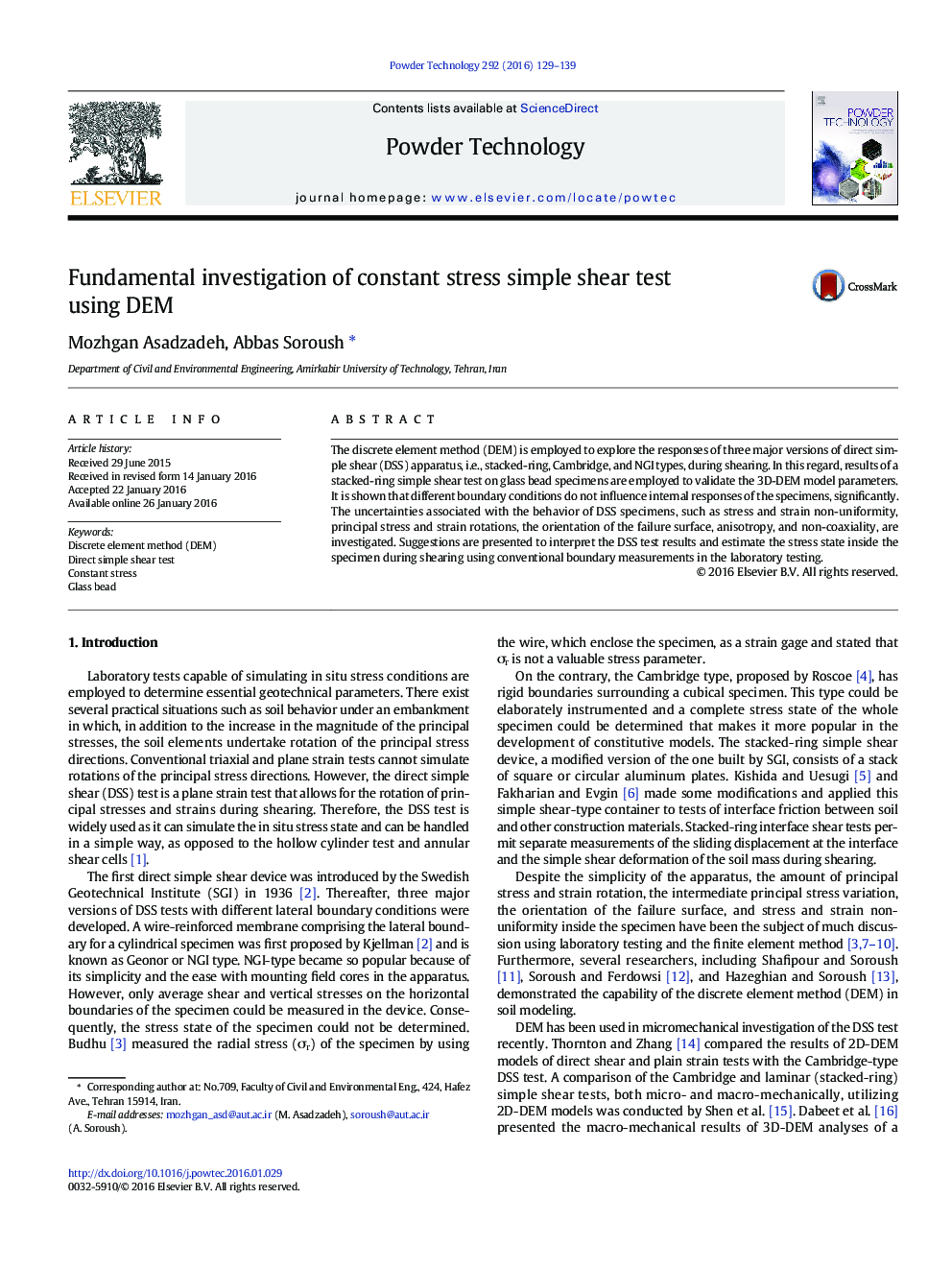| Article ID | Journal | Published Year | Pages | File Type |
|---|---|---|---|---|
| 235125 | Powder Technology | 2016 | 11 Pages |
•Different types of simple shear apparatus including stacked-ring, NGI and Cambridge types are modeled using DEM.•The stress state, principal stress/strain rotation and normal force distribution are investigated.•Non-coaxiality was observed before the critical state.•A good insight into test results interpretation procedure is provided.
The discrete element method (DEM) is employed to explore the responses of three major versions of direct simple shear (DSS) apparatus, i.e., stacked-ring, Cambridge, and NGI types, during shearing. In this regard, results of a stacked-ring simple shear test on glass bead specimens are employed to validate the 3D-DEM model parameters. It is shown that different boundary conditions do not influence internal responses of the specimens, significantly. The uncertainties associated with the behavior of DSS specimens, such as stress and strain non-uniformity, principal stress and strain rotations, the orientation of the failure surface, anisotropy, and non-coaxiality, are investigated. Suggestions are presented to interpret the DSS test results and estimate the stress state inside the specimen during shearing using conventional boundary measurements in the laboratory testing.
Graphical abstractFigure optionsDownload full-size imageDownload as PowerPoint slide
